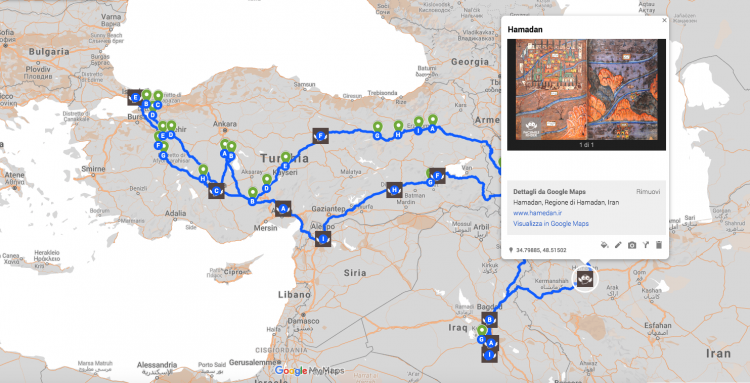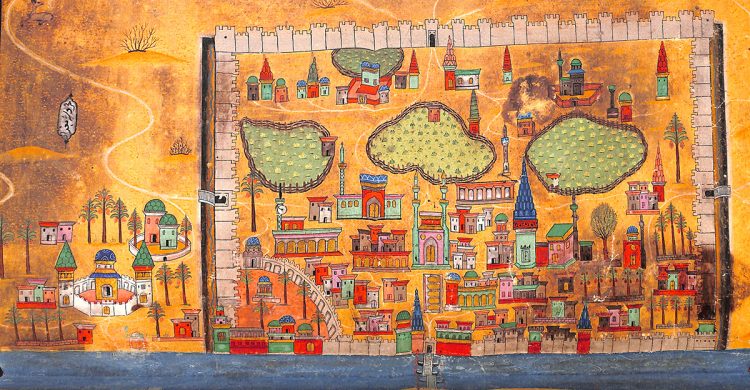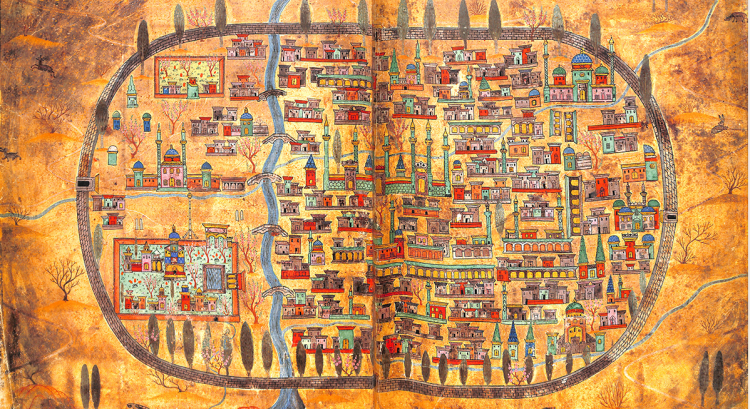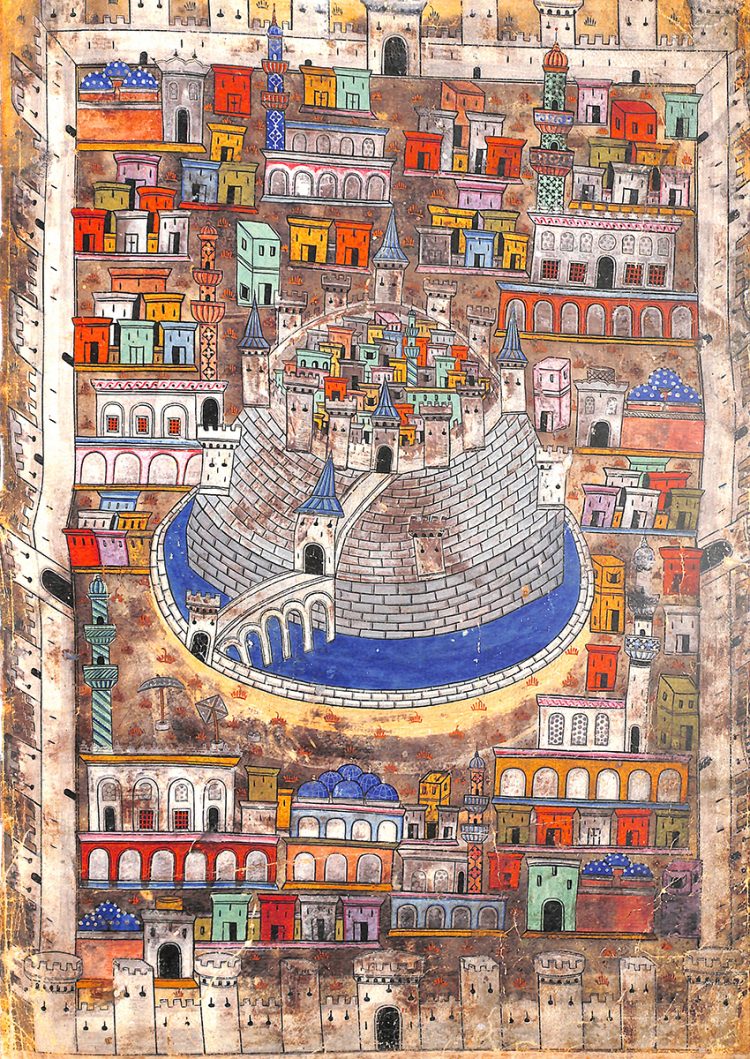Are you ready to travel five centuries back in time? Pack your walking shoes, open our interactive map, and let’s follow the Ottoman troops in 16th-century Baghdad, Tabriz, and Aleppo. Scroll down to see the video!

If it weren’t for Matrakçı Nasuh, we would know a lot less about 16th-century Middle Eastern nature and architecture. Born in what is modern-day Bosnia and Herzegovina, Nasuh was active at the Ottoman court palace as a painter, geographer, historian, and expert swordsman — his cognomen Matrakçı comes from matrak, a sword game he invented himself.
While wandering through the rooms of Topkapı Palace, Nasuh had access to a wealth of maps and documents seized from enemies of the Ottoman Empire during fierce battles. No historian knows for sure what he leafed through, yet his illustrations are strikingly similar to European portolan charts: they thoroughly represent the flora and fauna of each place, and they never portray human figures.
Nasuh used warm or cool colors according to the season and geographical area. Spring meadows are bright green, deserts ochre and orange.
Inspired by the nautical maps of European enemies and of the Ottoman naval commander Piri Reis, Nasuh went on to develop a new naturalistic style magnificently represented in a manuscript known as Menazilname. The volume, an account of Sultan Süleyman’s 1534 Iraqi campaign, contains the first naturalistic depictions of many plants and flowers, and the birds and animals are drawn with such detail that we can identify different species.

Thanks to Nasuh’s attention to detail, and to the exquisitely made facsimile by Masa, we can travel in time and space to see what the Middle East looked like five centuries ago. Click on the brown owls to see each city through an illuminator’s eyes!
Discover Baghdad, Aleppo, and Tabriz below. Our tour guide is no one less than Evliya Çelebi, who explored the territory of the Ottoman Empire about one hundred years after Sultan the Magnificent’s campaign.
Baghdad
Surrounded by the dark yellow desert, and by the lions, deer, and hares inhabiting it, is the fortified town of Baghdad with its white city walls, cottages, gardens, and date palms growing near the Tigris river. When Evliya Çelebi saw Baghdad, he wrote:
Seen from a stage distance away in four directions, Baghdad Castle has such an imposing and noble appearance by the will of God, that it puts fear into its enemies and those who wish to sack it become dust.

Baghdad’s inner castle is a pleasant castle made of brick and stone in a rectangular form on flat ground on the east side of the big outer wall. There is a gate opening onto the city center to the south and there is another secret gate that is kept closed. […] There are wells of pure water, underground munition stores, and granaries.
Aleppo
The city of Aleppo developed around its inner fortress, which is round in shape and surrounded by deep blue water. Around it, Nasuh painted five mosques — each one decorated differently — flat-roofed houses, three-domed hammams, and marketplaces with arcades.
Evliya Çelebi visited Aleppo many times to admire its fortress, which seemed to him “a white pearl reaching for the sky.”
Evliya Çelebi described Aleppo as a lively town inhabited by industrious citizens belonging to seventy-two different neighborhoods, among which were Armenians and Jews. In the 17th century Aleppo was filled with lemon and bitter orange gardens, and its inner fortress, built on an artificial slope, was so high that the air became crisp and clear. A strongly built wall that is curved like a tortoise leads up from the moat to the ramparts of the castle. Every stone is as large as an elephant. Herds of gazelles, wild sheep, and wild goats roam freely and it is impossible to approach them. […] When the city is besieged a wooden drawbridge is pulled up to shield the gate. Inside it, on either side of the road, all the guards stand at the ready with weapons in their hands.
Tabriz
Another of Evliya Çelebi’s favorite cities was Tabriz, “a city of joy and happiness, with all its buildings made with glazed tiles, porcelain, lime, and gypsum.” The explorer believed that the name Tabriz came from teb (malaria) and rîz (scattering), meaning “malaria-scattering” — the only other city without malaria being the inner castle of Cairo.

The area within the town was so large that it took four days to walk around it. Nasuh spared no detail in depicting its monuments: a mosque with seven minarets, bazaars, buildings with conical roofs, palace gardens in bloom, köşks and pools of blue water.
Matrakçı Nasuh’s naturalistic style had a strong impact on future generations of Ottoman artists. One of them, Kara Memi, filled 370 pages with unique floral motifs.


